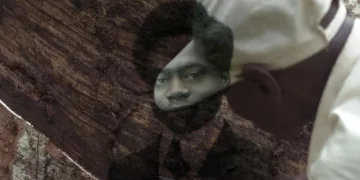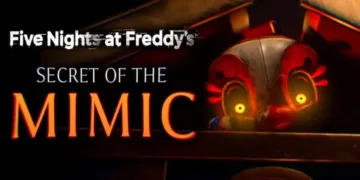The Madame Blanc Mysteries returns for its fourth season with the same sun-drenched promise that has sustained its loyal viewership: British expatriate Jean White, an antiques dealer with a knack for solving murders, continues her amateur detective work in the fictional French village of Sainte Victoire. Sally Lindsay’s Jean operates within the established framework of the cozy mystery, where violent crime serves as mere backdrop to character development and gentle humor.
The series maintains its episodic structure while advancing the romantic subplot between Jean and taxi driver Dom Hayes, played by Steve Edge, whose relationship has evolved from tentative flirtation to secretive coupling. The show’s appeal lies not in its adherence to realistic police procedure—Jean’s involvement in official investigations stretches credibility to breaking point—but in its creation of a comfort zone for viewers seeking unchallenging entertainment.
Alex Gaumond’s police chief Caron facilitates Jean’s amateur sleuthing with remarkable patience, while the supporting cast, including Tony Robinson’s Uncle Patrick and the aristocratic comedy duo of Sue Holderness and Robin Askwith, provides familiar rhythms of British sitcom tradition. The series operates as televisual comfort food, filmed on Malta’s reliably sunny Gozo rather than the frequently unpredictable weather of actual southern France.
Performances That Embrace Rather Than Challenge
Sally Lindsay’s dual role as star and co-creator shapes every aspect of the series’ character work. Her Jean White embodies the archetypal amateur detective with enough competence to solve crimes but sufficient warmth to avoid alienating viewers who might find excessive brilliance off-putting. Lindsay’s performance maintains the delicate balance between professional antiques expertise and relatable human vulnerability, though her chemistry with Steve Edge feels more manufactured than organic. Edge’s Dom Hayes represents the reliable romantic interest, providing steady support without overwhelming Jean’s detective narrative.
The supporting ensemble operates within clearly defined parameters that prioritize familiarity over surprise. Tony Robinson’s Uncle Patrick functions as the series’ connection to broader British comedy traditions, his presence evoking memories of Blackadder while anchoring the show’s more farcical elements. Sue Holderness and Robin Askwith’s Jeremy and Judith Lloyd James serve as the series’ designated comic relief, their aristocratic pretensions providing easy targets for gentle mockery. Their exaggerated “darling” exchanges and upper-class mishaps follow sitcom conventions so closely that they border on parody.
The series’ treatment of mature romance between Jean and Dom attempts to present adult relationships with dignity, though their secret courtship feels oddly adolescent for characters of their supposed sophistication. Their interactions carry the weight of genuine friendship, suggesting that Lindsay and Edge’s real-life rapport translates effectively to screen chemistry. However, the writing tends to infantilize their romantic development, reducing experienced adults to teenagers sneaking kisses and holding hands in shadowy corners.
Guest performers vary considerably in their integration into the series’ established tone. Some episodes benefit from actors who understand the show’s particular brand of light entertainment, while others suffer from performers who either overplay the comedy or underestimate the audience’s tolerance for stylized characterization. The series works best when guest stars embrace its artificial conventions rather than attempting to inject unwanted realism.
Mysteries That Comfort Rather Than Challenge
The fourth season opens with a Christmas special featuring a puppeteer’s murder through a razor-blade-equipped puppet—a premise that promises creativity but delivers predictable family drama. The seasonal setting provides the series with its most successful atmospheric element, contrasting Mediterranean sunshine with traditional British Christmas imagery. This juxtaposition exemplifies the show’s approach to mystery construction: superficial innovation masking familiar emotional territory.
Episodes range from antique fraud investigations to museum attacks, each tied to Jean’s professional expertise in ways that feel both organic and contrived. The series excels at integrating antiques knowledge into its mystery solutions, providing viewers with educational content alongside entertainment. However, the connection between Jean’s professional background and the crimes she encounters stretches coincidence beyond reasonable limits. Every case seems designed specifically for her skill set, creating a hermetically sealed world where amateur detection becomes not just possible but inevitable.
The writing demonstrates competent understanding of cozy mystery conventions while rarely transcending them. Clues are distributed fairly throughout each episode, allowing attentive viewers to solve cases alongside Jean. The mysteries avoid graphic violence or disturbing psychological depths, maintaining the series’ commitment to escapist entertainment. Yet this approach often results in cases that resolve too easily, lacking the complexity that might elevate the material beyond genre exercises.
Secondary storylines provide necessary breathing space between investigative sequences, though they frequently rely on sitcom misunderstandings rather than genuine character development. Uncle Patrick’s various schemes and Jeremy and Judith’s marital complications offer mild entertainment without advancing the series’ emotional stakes. These B-plots serve their structural purpose while highlighting the show’s limitations in balancing multiple narrative threads.
The series’ approach to French culture and setting remains persistently superficial. Characters speak English with occasional French phrases sprinkled throughout, creating an artificial linguistic landscape that prioritizes viewer comfort over cultural authenticity. The crimes themselves could occur anywhere, with the French setting serving primarily as scenic backdrop rather than integral story element.
Visual Pleasure and Cultural Displacement
Malta’s reliable sunshine provides the series with its most successful production element, creating a Mediterranean paradise that fulfills viewer fantasies of permanent vacation. The bright, inviting cinematography matches the cozy mystery genre’s requirements while papering over budgetary limitations that might otherwise expose the series’ modest production values. The village of Sainte Victoire feels sufficiently authentic to support the series’ fictional framework without demanding rigorous examination.
The production design succeeds in creating a believable French village atmosphere, though closer inspection reveals the artificial nature of this cultural construction. Street signs, architectural details, and background elements suggest France without committing to genuine French cultural specificity. This approach serves the series’ escapist function while avoiding the complications that might arise from more authentic cultural representation.
The series’ visual language prioritizes warmth and accessibility over artistic distinction. Camera work remains functional rather than inspired, serving the narrative without drawing attention to technique. This approach suits the cozy mystery genre’s emphasis on comfort over innovation, though it occasionally renders the series visually indistinguishable from other light entertainment programming.
The contrast between Christmas episodes and the Mediterranean setting provides the series with its most distinctive visual element. Snow-free Christmas celebrations in perpetual sunshine create a fantasy version of holiday tradition that appeals to viewers seeking escape from seasonal reality. This seasonal displacement reflects the series’ broader approach to cultural authenticity: surface elements of tradition combined with idealized circumstances.
Comfort Television in an Uncomfortable World
The Madame Blanc Mysteries operates within a clearly defined niche that prioritizes viewer comfort over artistic ambition. The series succeeds in creating reliable entertainment for audiences seeking unchallenging mystery solving combined with gentle humor and scenic beauty. Sally Lindsay and Sue Vincent’s understanding of their target demographic results in programming that delivers exactly what it promises: sunny escapism with familiar characters solving non-threatening crimes.
The series’ limitations become apparent when measured against mystery television that embraces complexity or cultural authenticity. The procedural elements remain laughably unrealistic, the cultural setting feels artificially constructed, and the mysteries themselves rarely surprise experienced viewers. However, these apparent weaknesses serve the series’ actual function as comfort viewing rather than challenging entertainment.
The mature romance between Jean and Dom represents the series’ most successful innovation, presenting adult relationships with dignity while avoiding the cynicism that characterizes much contemporary television. Their developing relationship provides emotional stakes that extend beyond individual episodes, though the writing occasionally underestimates the sophistication of its target audience.
The series’ future depends on maintaining its delicate balance between familiarity and innovation. Season four demonstrates that the formula remains viable, though expansion beyond its current parameters might require risks that could alienate the loyal viewership that has sustained four seasons of consistent, if unambitious, entertainment.
“The Madame Blanc Mysteries” is a cozy mystery series created by and starring Sally Lindsay. The fourth season premiered on Acorn TV on July 7, 2025, with a Christmas special preceding the season. In the United Kingdom, the series also airs on Channel 5. The show follows Jean White, an antiques dealer who moves to the French village of Sainte Victoire and finds herself solving a variety of mysteries and murders.
Full Credits
Director: Dermot Boyd
Writers: Sally Lindsay, Sue Vincent
Producers: Jake Rollins, Andy Morgan
Executive Producers: Mike Benson, Sally Lindsay, Caroline Roberts-Cherry, Andy Morgan
Cast: Sally Lindsay, Steve Edge, Robin Askwith, Sue Holderness, Sue Vincent, Alex Gaumond, Tony Robinson, Paul Chuckle
Composer: Steve White
The Review
The Madame Blanc Mysteries Season 4
The Madame Blanc Mysteries Season 4 succeeds as comfort television while failing as sophisticated mystery entertainment. The series delivers exactly what its audience expects: sunny escapism with likeable characters solving unthreatening crimes. While procedural realism and cultural authenticity remain sacrificed for viewer comfort, the show's commitment to gentle entertainment and mature romance provides reliable pleasure for cozy mystery enthusiasts.
PROS
- Sunny Mediterranean setting provides perfect escapist atmosphere
- Mature romance handled with dignity and warmth
- Reliable comfort viewing for cozy mystery fans
- Strong chemistry between lead actors
- Educational antiques content integrated naturally
CONS
- Unrealistic police procedures strain credibility
- Superficial French cultural representation
- Predictable mystery solutions lack complexity
- Formulaic episode structures become repetitive
- Limited character development beyond romantic subplot


















































